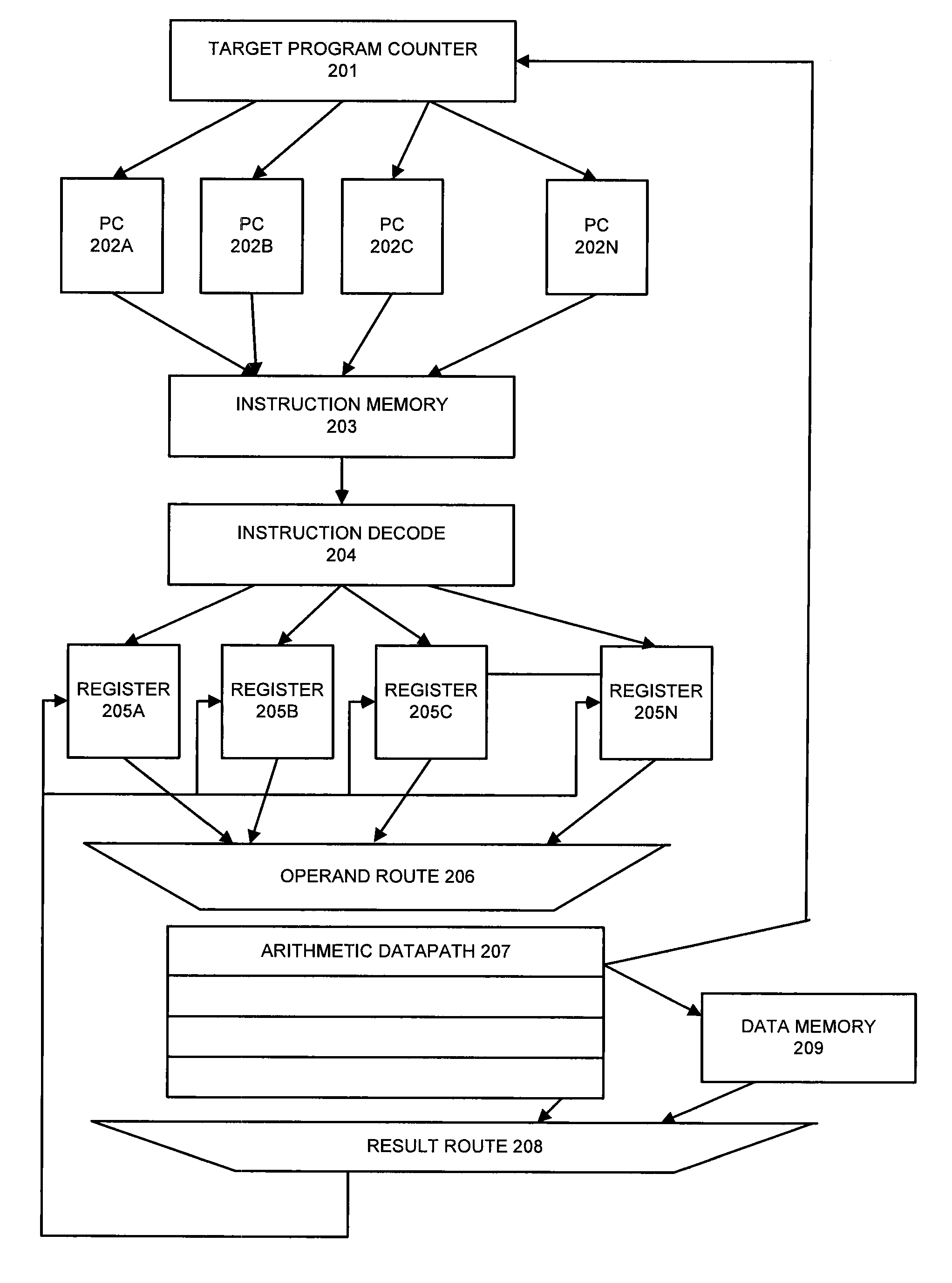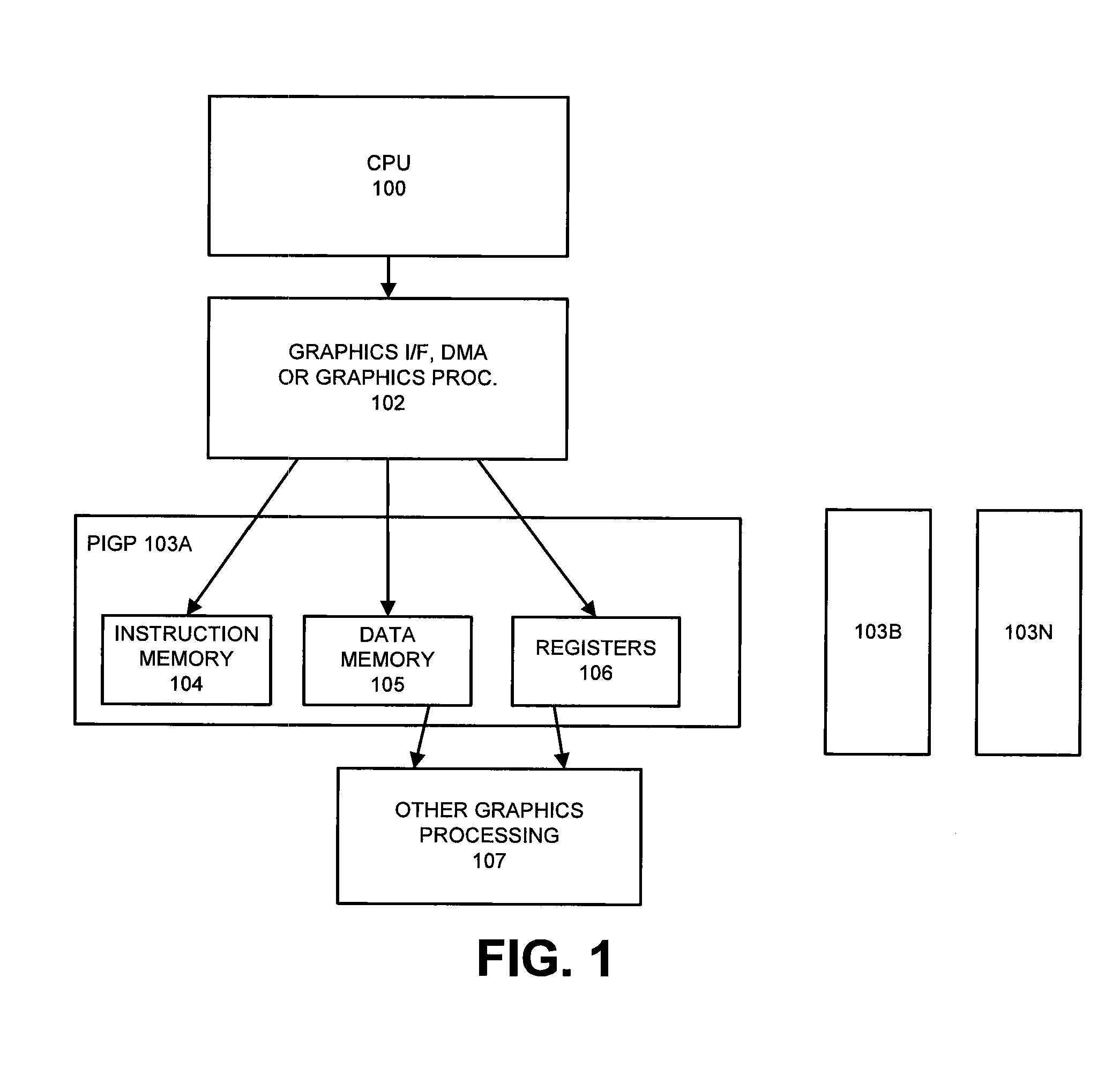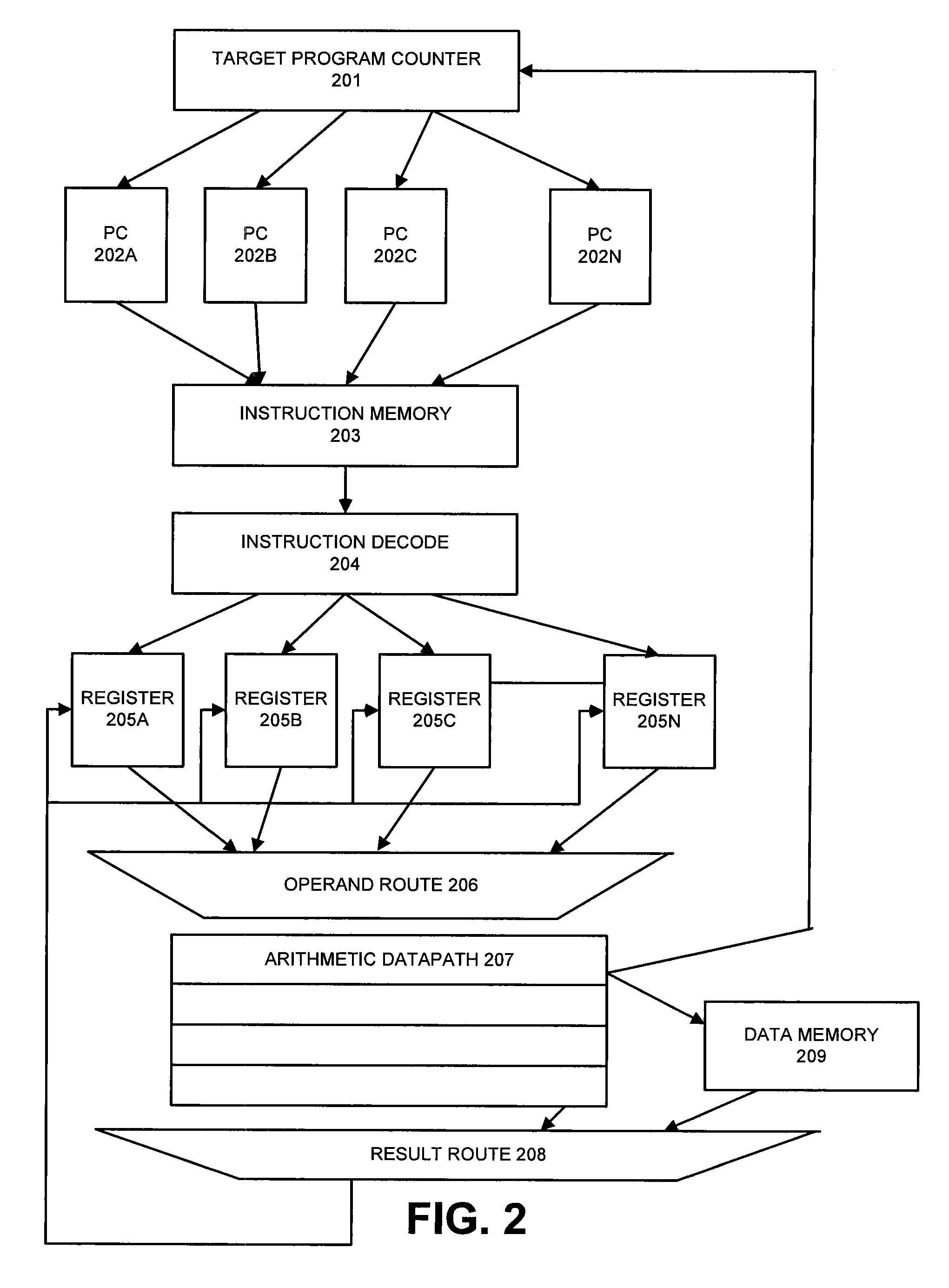Method and apparatus for interleaved graphics processing
a graphics processing and interleaved technology, applied in the field of graphics processing, can solve the problems of limiting flexibility and performance, complex hardware design and debugging process, and inflexible hardware solutions
- Summary
- Abstract
- Description
- Claims
- Application Information
AI Technical Summary
Benefits of technology
Problems solved by technology
Method used
Image
Examples
Embodiment Construction
[0029]A method and apparatus for interleaved graphics processing is described. In the following description, numerous specific details are set forth in order to provide a more detailed description of the invention. It will be apparent, however, to one skilled in the art, that the present invention may be practiced without these specific details. In other instances, well known details have not been provided so as to not unnecessarily obscure the invention.
[0030]The processing of three dimensional graphics is characterized by large amounts of processing. Graphics processors can process tens of millions of vertices and geometric primitives, and hundreds of millions of pixels per second. Because there is so much processing, any delay or inefficiency in program execution is harmful, and can be propagated very rapidly. But, because there is so much processing, with many of the tasks being independent from other tasks, there is the opportunity to continue processing other tasks when one ta...
PUM
 Login to View More
Login to View More Abstract
Description
Claims
Application Information
 Login to View More
Login to View More - R&D
- Intellectual Property
- Life Sciences
- Materials
- Tech Scout
- Unparalleled Data Quality
- Higher Quality Content
- 60% Fewer Hallucinations
Browse by: Latest US Patents, China's latest patents, Technical Efficacy Thesaurus, Application Domain, Technology Topic, Popular Technical Reports.
© 2025 PatSnap. All rights reserved.Legal|Privacy policy|Modern Slavery Act Transparency Statement|Sitemap|About US| Contact US: help@patsnap.com



